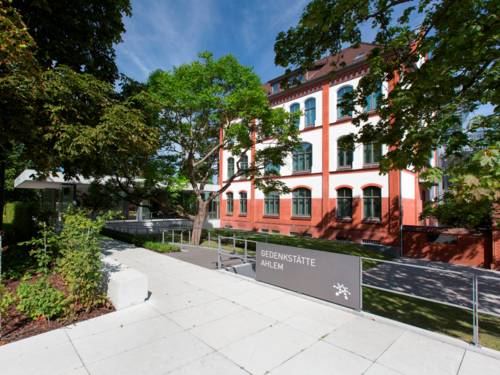Round tour 03
An execution site
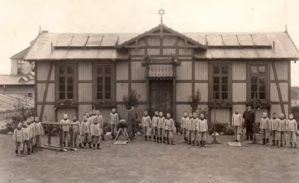
The tabernacle (sukkah) at its original location around 1900. A Star of David adorns the gable
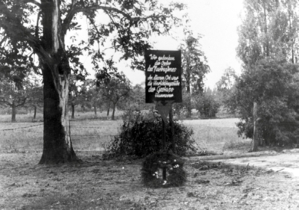
Commemorative plaque put up in 1947 in remembrance of Gestapo prisoners murdered on the site of the sukkah, which had been moved. The chestnut tree was damaged when the Gestapo burned incriminating material here.
The tabernacle (sukkah) made of wood and built in 1899 served a religious purpose. Parts of its roof had to be kept open during the Jewish festival of tabernacles (Sukkot) in order to commemorate life under the open sky during the exodus from Egypt. During the rest of the year, the structure was used as a storage room for sport equipment and as a gymnasium.
The wooden building was transferred in a slightly modified form to a park to the west of the main building. In 1945 it was used as an execution site for the neighbouring Gestapo-prison.
In 1993 the area of the former Sukkah was surrounded by ashlars. The inscriptions reflect the state of knowledge at the time.
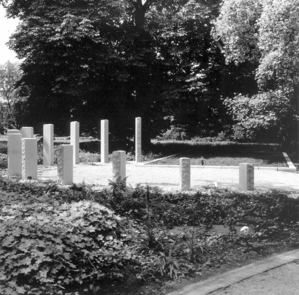
On the 100th anniversary of the Gardening School, a memorial is inaugurated where the sukkah once stood. Twelve stone slabs symbolize the twelve tribes of Israel and at the same time the twelve synagogue congregations in the Hanover area.
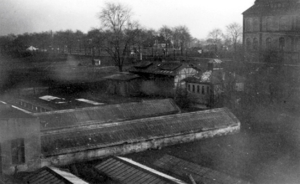
View towards the principal’s house in 1931. In front of it, the sukkah with annex and toilet building. In the foreground: the workshop with hothouses

 Deutsch
Deutsch
 English
English
 中文
中文
 Danish
Danish
 Eesti
Eesti
 Español
Español
 Suomi
Suomi
 Français
Français
 Italiano
Italiano
 日本語
日本語
 한국
한국
 Nederlands
Nederlands
 Norge
Norge
 Polski
Polski
 Portugues
Portugues
 Русский
Русский
 Svenska
Svenska
 Türkçe
Türkçe
 العربية
العربية
 Romanesc
Romanesc
 български
български
